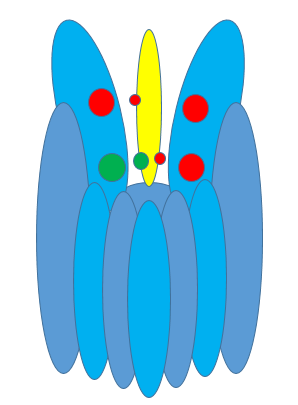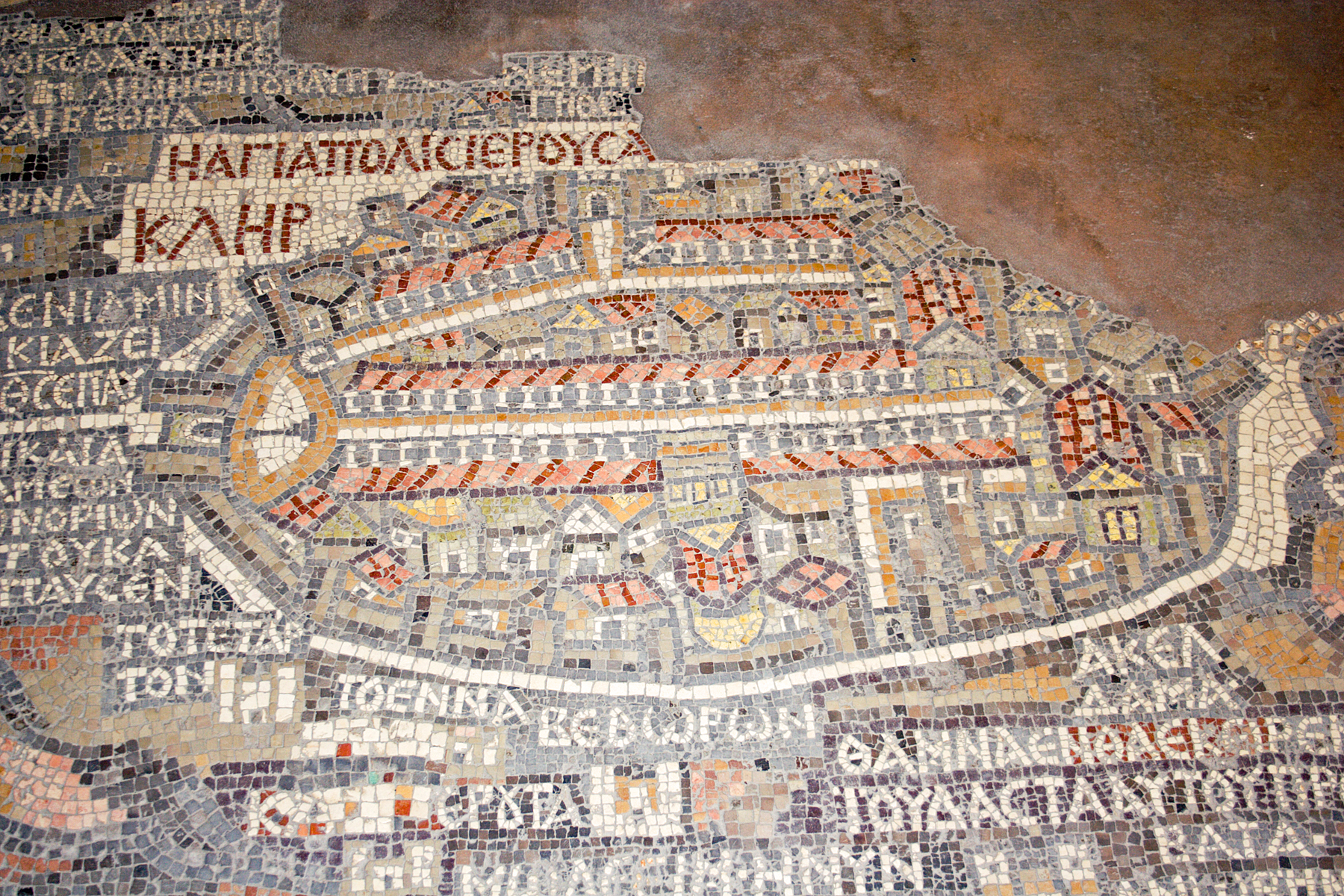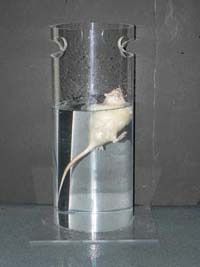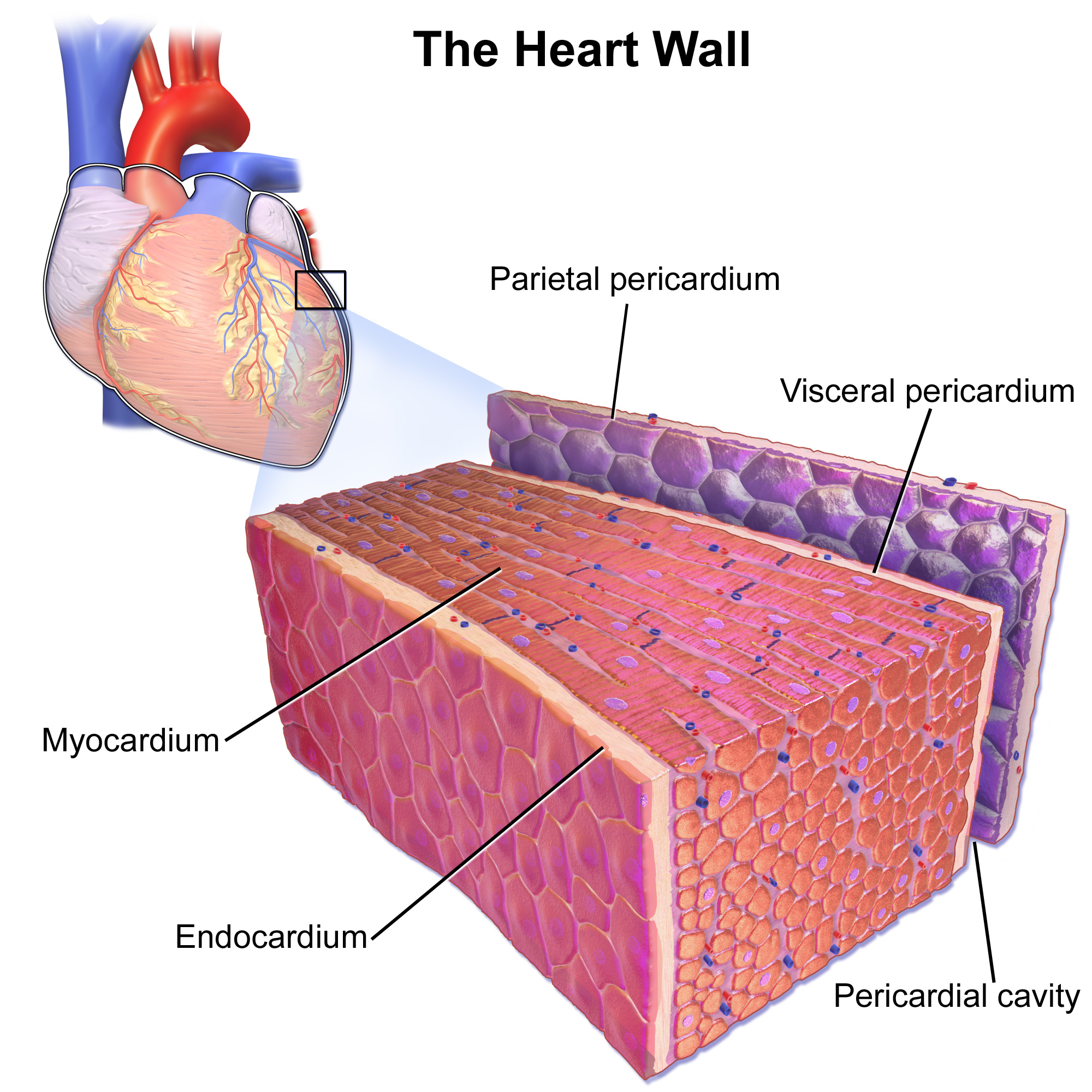|
SA 4503
Cutamesine (SA 4503) is a synthetic sigma receptor agonist which is selective for the ''σ''1 receptor, a chaperone protein mainly found in the endoplasmic reticulum of cells in the central nervous system. These ''σ''1 receptors play a key role in the modulation of Ca2+ release and apoptosis. Cutamesine's activation of the ''σ''1 receptor is tied to a variety of physiological phenomena in the CNS, including activation of dopamine-releasing neurons and repression of the MAPK/ERK pathway. Structure The molecular formula for cutamesine is C23H32N2O2. This particular agonist is a piperazine, meaning that its core functional group is a six-membered heterocycle with two oppositely-placed nitrogen atoms. Two phenalkyl groups act as substituents for the two nitrogen atoms. The phenethyl group has methoxy groups on the 3 and 4 locations of the aromatic ring, while the phenpropyl group has no additional functional groups attached. Affinity Causes of Affinity The 3,4-methoxy groups l ... [...More Info...] [...Related Items...] OR: [Wikipedia] [Google] [Baidu] |
Sigma Receptor
Sigma receptors (σ-receptors) are protein cell surface receptors that bind ligands such as 4-PPBP (4-phenyl-1-(4-phenylbutyl) piperidine), SA 4503 (cutamesine), ditolylguanidine, dimethyltryptamine, and siramesine. There are two subtypes, sigma-1 receptors (σ1) and sigma-2 receptors (σ2), which are classified as sigma receptors for their pharmacological similarities, even though they are evolutionarily unrelated. The fungal protein ERG2, a C-8 sterol isomerase, falls into the same protein family as sigma-1. Both localize to the ER membrane, although sigma-1 is also reported to be a cell surface receptor. Sigma-2 is an EXPREA domain protein (citation needed) with a mostly intracellular (ER membrane) localization. Classification Because the σ-receptor was originally discovered to be agonized by benzomorphan opioids and antagonized by naltrexone, σ-receptors were originally believed to be a type of opioid receptor. When the σ1 receptor was isolated and cloned, it ... [...More Info...] [...Related Items...] OR: [Wikipedia] [Google] [Baidu] |
Sigma Agonists
Sigma (; uppercase Σ, lowercase σ, lowercase in word-final position ς; grc-gre, σίγμα) is the eighteenth letter of the Greek alphabet. In the system of Greek numerals, it has a value of 200. In general mathematics, uppercase Σ is used as an operator for summation. When used at the end of a letter-case word (one that does not use all caps), the final form (ς) is used. In ' (Odysseus), for example, the two lowercase sigmas (σ) in the center of the name are distinct from the word-final sigma (ς) at the end. The Latin letter S derives from sigma while the Cyrillic letter Es derives from a lunate form of this letter. History The shape (Σς) and alphabetic position of sigma is derived from the Phoenician letter ( ''shin''). Sigma's original name may have been ''san'', but due to the complicated early history of the Greek epichoric alphabets, ''san'' came to be identified as a separate letter in the Greek alphabet, represented as Ϻ. Herodotus reports that "san" ... [...More Info...] [...Related Items...] OR: [Wikipedia] [Google] [Baidu] |
Piperazines
Substituted piperazines are a class of chemical compounds based on a piperazine core. Some are used as recreational drugs and some are used in scientific research. List of substituted piperazines Benzylpiperazines File:Benzylpiperazine.svg, 1-Benzylpiperazine File:MBZP.svg, 1-Methyl-4-benzylpiperazine File:DBZP.svg, 1,4-Dibenzylpiperazine File:MDBZP.svg, 3,4-Methylenedioxy-1-benzylpiperazine File:2C-B-BZP.svg, 4-Bromo-2,5-dimethoxy-1-benzylpiperazine File:Methoxypiperamide.png, Methoxypiperamide File:Sunifiram.svg , Sunifiram File:3-Methylbenzylpiperazine structure.png, 3-Methylbenzylpiperazine * 1-Benzylpiperazine (BZP) * 1-Methyl-4-benzylpiperazine (MBZP) * 1,4-Dibenzylpiperazine (DBZP) * 3,4-Methylenedioxy-1-benzylpiperazine (MDBZP) * 4-Bromo-2,5-dimethoxy-1-benzylpiperazine (2C-B-BZP) * Methoxypiperamide (MeOP, MEXP) ((4-methoxyphenyl)(4-methylpiperazin-1-yl)methanone) * Sunifiram (1-benzoyl-4-propanoylpiperazine) * 3-Methylbenzylpiperazine (3-MeBZP) Befuralin ... [...More Info...] [...Related Items...] OR: [Wikipedia] [Google] [Baidu] |
Thionyl Chloride
Thionyl chloride is an inorganic compound with the chemical formula . It is a moderately volatile, colourless liquid with an unpleasant acrid odour. Thionyl chloride is primarily used as a chlorinating reagent, with approximately per year being produced during the early 1990s, but is occasionally also used as a solvent. It is toxic, reacts with water, and is also listed under the Chemical Weapons Convention as it may be used for the production of chemical weapons. Thionyl chloride is sometimes confused with sulfuryl chloride, , but the properties of these compounds differ significantly. Sulfuryl chloride is a source of chlorine whereas thionyl chloride is a source of chloride ions. Production The major industrial synthesis involves the reaction of sulfur trioxide and sulfur dichloride: This synthesis can be adapted to the laboratory by heating oleum to slowly distill the sulfur trioxide into a cooled flask of sulfur dichloride. :SO3 + SCl2 -> SOCl2 + SO2 Other methods i ... [...More Info...] [...Related Items...] OR: [Wikipedia] [Google] [Baidu] |
DMPEA
DMPEA can refer to two subclasses of substituted phenethylamines: Dimethoxy-phenethylamines * 2,3-Dimethoxyphenethylamine * 2,4-Dimethoxyphenethylamine * 2,5-Dimethoxyphenethylamine * 2,6-Dimethoxyphenethylamine * 3,4-Dimethoxyphenethylamine (homoveratrylamine) * 3,5-Dimethoxyphenethylamine Dimethyl-phenethylamines * α,α-Dimethylphenethylamine (Phentermine) * ''N'',α-Dimethylphenethylamine (Methamphetamine) * 2,α-Dimethylphenethylamine (Ortetamine) * 3,α-Dimethylphenethylamine * 4,α-Dimethylphenethylamine 4-Methylamphetamine (4-MA; PAL-313; Aptrol; p-TAP) is a stimulant and anorectic drug of the phenethylamine and amphetamine chemical classes. In vitro, it acts as a potent and balanced serotonin, norepinephrine, and dopamine releasing agent wi ... * ''N'',''N''-Dimethylphenethylamine {{Chemistry index ... [...More Info...] [...Related Items...] OR: [Wikipedia] [Google] [Baidu] |
Cutamesine Synthesis
Cutamesine (SA 4503) is a synthetic sigma receptor agonist which is selective for the ''σ''1 receptor, a chaperone protein mainly found in the endoplasmic reticulum of cells in the central nervous system. These ''σ''1 receptors play a key role in the modulation of Ca2+ release and apoptosis. Cutamesine's activation of the ''σ''1 receptor is tied to a variety of physiological phenomena in the CNS, including activation of dopamine-releasing neurons and repression of the MAPK/ERK pathway. Structure The molecular formula for cutamesine is C23H32N2O2. This particular agonist is a piperazine, meaning that its core functional group is a six-membered heterocycle with two oppositely-placed nitrogen atoms. Two phenalkyl groups act as substituents for the two nitrogen atoms. The phenethyl group has methoxy groups on the 3 and 4 locations of the aromatic ring, while the phenpropyl group has no additional functional groups attached. Affinity Causes of Affinity The 3,4-methoxy group ... [...More Info...] [...Related Items...] OR: [Wikipedia] [Google] [Baidu] |
Neurotrophic Factors
Neurotrophic factors (NTFs) are a family of biomolecules – nearly all of which are peptides or small proteins – that support the growth, survival, and differentiation of both developing and mature neurons. Most NTFs exert their trophic effects on neurons by signaling through tyrosine kinases, usually a receptor tyrosine kinase. In the mature nervous system, they promote neuronal survival, induce synaptic plasticity, and modulate the formation of long-term memories. Neurotrophic factors also promote the initial growth and development of neurons in the central nervous system and peripheral nervous system, and they are capable of regrowing damaged neurons in test tubes and animal models. Some neurotrophic factors are also released by the target tissue in order to guide the growth of developing axons. Most neurotrophic factors belong to one of three families: (1) neurotrophins, (2) glial cell-line derived neurotrophic factor family ligands (GFLs), and (3) neuropoietic c ... [...More Info...] [...Related Items...] OR: [Wikipedia] [Google] [Baidu] |
Hippocampus
The hippocampus (via Latin from Greek , ' seahorse') is a major component of the brain of humans and other vertebrates. Humans and other mammals have two hippocampi, one in each side of the brain. The hippocampus is part of the limbic system, and plays important roles in the consolidation of information from short-term memory to long-term memory, and in spatial memory that enables navigation. The hippocampus is located in the allocortex, with neural projections into the neocortex in humans, as well as primates. The hippocampus, as the medial pallium, is a structure found in all vertebrates. In humans, it contains two main interlocking parts: the hippocampus proper (also called ''Ammon's horn''), and the dentate gyrus. In Alzheimer's disease (and other forms of dementia), the hippocampus is one of the first regions of the brain to suffer damage; short-term memory loss and disorientation are included among the early symptoms. Damage to the hippocampus can also result ... [...More Info...] [...Related Items...] OR: [Wikipedia] [Google] [Baidu] |
Cardiac Muscle Cell
Cardiac muscle (also called heart muscle, myocardium, cardiomyocytes and cardiac myocytes) is one of three types of vertebrate muscle tissues, with the other two being skeletal muscle and smooth muscle. It is an involuntary, striated muscle that constitutes the main tissue of the wall of the heart. The cardiac muscle (myocardium) forms a thick middle layer between the outer layer of the heart wall (the pericardium) and the inner layer (the endocardium), with blood supplied via the coronary circulation. It is composed of individual cardiac muscle cells joined by intercalated discs, and encased by collagen fibers and other substances that form the extracellular matrix. Cardiac muscle contracts in a similar manner to skeletal muscle, although with some important differences. Electrical stimulation in the form of a cardiac action potential triggers the release of calcium from the cell's internal calcium store, the sarcoplasmic reticulum. The rise in calcium causes the ... [...More Info...] [...Related Items...] OR: [Wikipedia] [Google] [Baidu] |
Adenosine Triphosphate
Adenosine triphosphate (ATP) is an organic compound that provides energy to drive many processes in living cells, such as muscle contraction, nerve impulse propagation, condensate dissolution, and chemical synthesis. Found in all known forms of life, ATP is often referred to as the "molecular unit of currency" of intracellular energy transfer. When consumed in metabolic processes, it converts either to adenosine diphosphate (ADP) or to adenosine monophosphate (AMP). Other processes regenerate ATP. The human body recycles its own body weight equivalent in ATP each day. It is also a precursor to DNA and RNA, and is used as a coenzyme. From the perspective of biochemistry, ATP is classified as a nucleoside triphosphate, which indicates that it consists of three components: a nitrogenous base ( adenine), the sugar ribose, and the triphosphate. Structure ATP consists of an adenine attached by the 9-nitrogen atom to the 1′ carbon atom of a sugar ( ribose), which in ... [...More Info...] [...Related Items...] OR: [Wikipedia] [Google] [Baidu] |
Angiotensin
Angiotensin is a peptide hormone that causes vasoconstriction and an increase in blood pressure. It is part of the renin–angiotensin system, which regulates blood pressure. Angiotensin also stimulates the release of aldosterone from the adrenal cortex to promote sodium retention by the kidneys. An oligopeptide, angiotensin is a hormone and a dipsogen. It is derived from the precursor molecule angiotensinogen, a serum globulin produced in the liver. Angiotensin was isolated in the late 1930s (first named 'angiotonin' or 'hypertensin') and subsequently characterized and synthesized by groups at the Cleveland Clinic and Ciba laboratories. Precursor and types Angiotensinogen Angiotensinogen is an α-2-globulin synthesized in the liver and is a precursor for angiotensin, but has also been indicated as having many other roles not related to angiotensin peptides. It is a member of the serpin family of proteins, leading to another name: Serpin A8, although it is not know ... [...More Info...] [...Related Items...] OR: [Wikipedia] [Google] [Baidu] |





